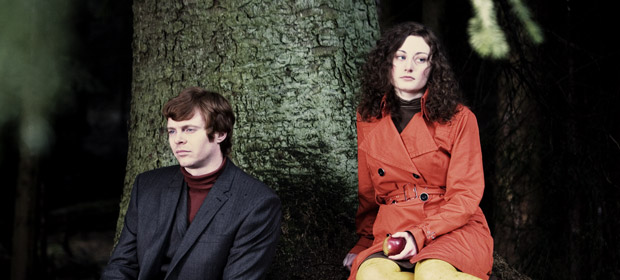 Self Made is the feature film debut of Gillian Wearing, an artist who emerged in the unofficial movement (yet branded by the international art world) YBA, or Young British Artist. Wearing’s work has always dealt with identity and its performance, working in various art movements which I believe to be organic, not a reaction to the global art market, but I’m just a naive film reviewer.
Self Made is the feature film debut of Gillian Wearing, an artist who emerged in the unofficial movement (yet branded by the international art world) YBA, or Young British Artist. Wearing’s work has always dealt with identity and its performance, working in various art movements which I believe to be organic, not a reaction to the global art market, but I’m just a naive film reviewer.
Before I get myself into any trouble I shall describe Wearing’s Self Made. She puts an ad out online: “Would you like to be in a film? You can play yourself or a fictional character. Call Gillian.” From the self-selected pool she chooses her collaborators: seven strangers were chosen from hundreds, all with unique and at times rather mundane narratives. Wearing hires a method acting coach, Sam Rumbelow to work with the group, and together they craft “scenes” addressing their greatest fears and deepest issues ranging from violence, father-daughter relationships and an obsession with Mussolini.
Wearing’s voice is removed from the film. She is a puppet master with Rumbelow. Her relationship (if any at all) to the subjects is ambiguous, although there are direct interviews with the subjects once they complete their filming their scenes. These interviews are shot with a certain tenderness and respect that the ethics of such a tense experience aren’t called into question. Still, this is the type of experiment that if performed at a university would require the buy-in of a human subject review board. The violence in question is quite alarming, including one sequence that opens the film as a teaser and revealed to expose something that I applaud the subject for going along with. Facing dark thoughts and bringing them to the surface in a healthy way is startling.

All of this evokes curator Nicolas Bourriaud’s assessment of “Altermodernity” – a period following post-modernity and some of the previous work of Wearing which can be considered as work of relational aesthetics. Altermodernity proposes a breakdown of identity: a reaction to relational aesthetics in a globalized economy / art market, like an ivy the roots of an artist root from the stem, both above and below ground. This is perhaps the best way to describe the messy work of Rumbelow in drawing out past and present experiences, often leading to powerful emotional reactions. His techniques allow one to experience themselves bringing the unconscious to the conscious level, becoming aware of the performance of that is daily life. Oddly I think piece is found within that awkward space, although Self Made isn’t a form of therapy.


